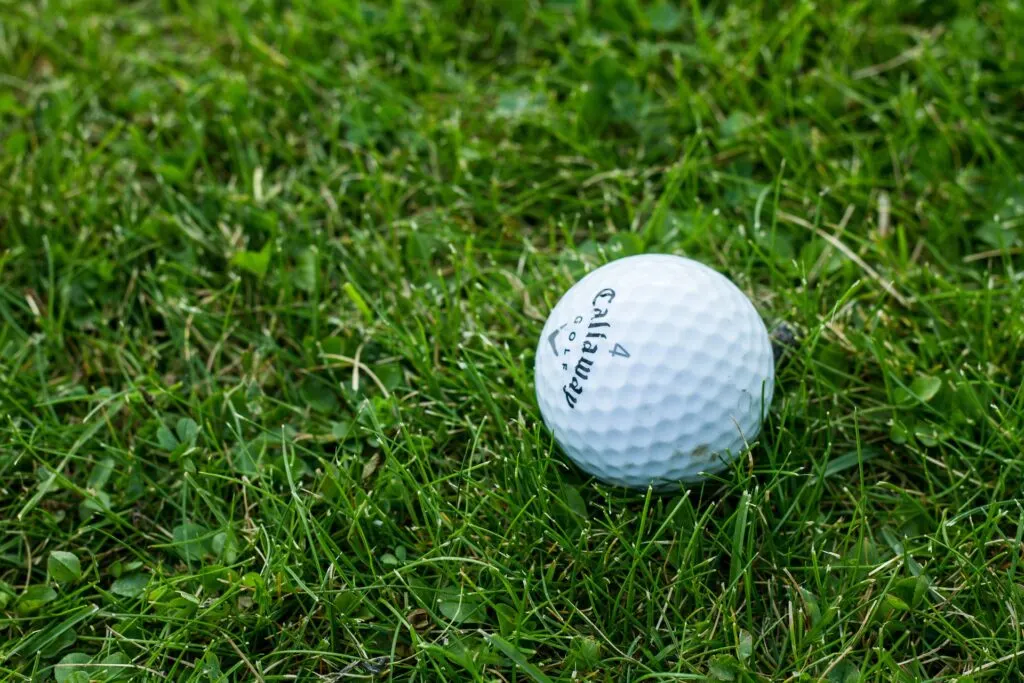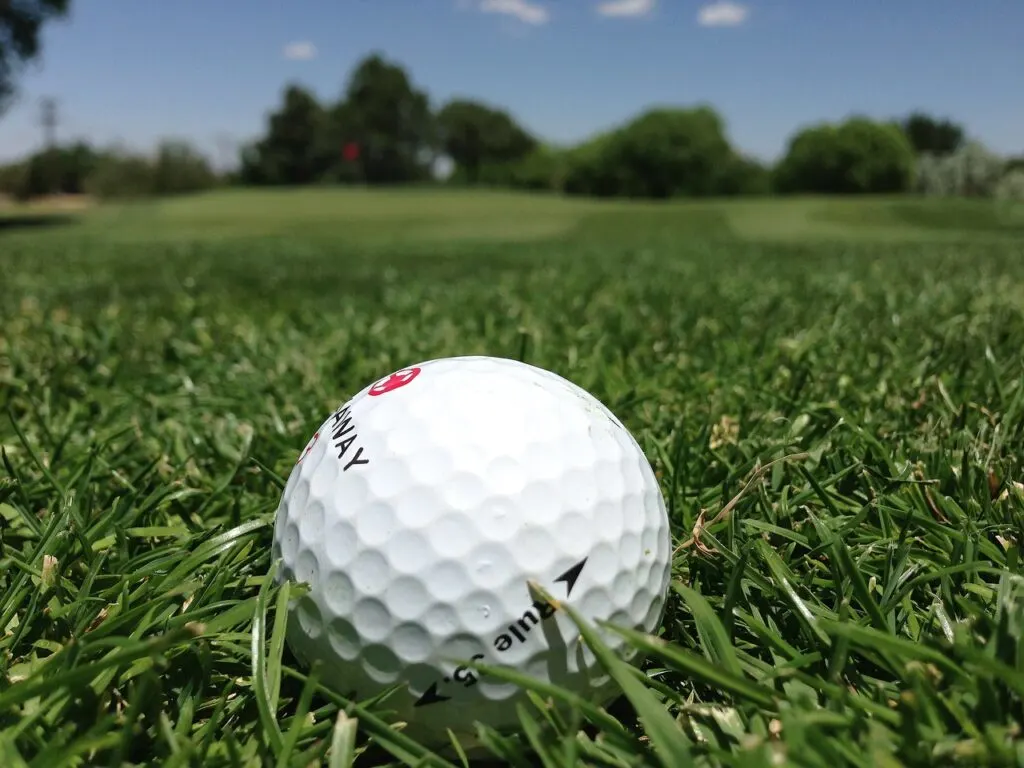A “flyer” (flier) refers to a golf shot that flies further than expected.
It usually occurs when hitting from short to medium length rough, also known as a “flyer lie”.
If there is grass behind the golf ball, it’s impossible to hit the ball without getting grass trapped between the ball and the clubface.
When this happens, friction is reduced and the club imparts less spin on the ball, causing the ball to fly further and roll out more when it lands.
How To Identify A Flier Lie
With all shots, the first thing you should do when you get to your ball is evaluate your lie.
You will rarely catch a flyer off the fairway or out of thick rough.
If your golf ball is in the fairway or even the first cut of rough, the grass is likely not long enough to get caught between the clubface and ball.
If your ball is buried in thick rough, the grass will slow the club face down too much before impact to cause a flyer.
Be particularly concerned if the grain of the grass is growing towards the target.

But, if you find your ball sitting down and surrounded by medium length rough, you likely have a flyer lie.
You will most commonly hit a flier with a 6, 7, 8, or 9 iron due to the trajectory and amount of spin those clubs create.
Flyers can also be more common on wet days.
Water on the ball, grass, or clubface reduces friction which in turn reduces spin rates.
This is one of the reasons you will see PGA tour players always ensuring the clubface is a dry as possible before hitting a shot.
Related: What is a Double Cross In Golf?
Really Cool Video On The Physics Of Friction And Spin
How To Play A Flyer Lie
It’s very difficult, even for pros, to know just how much spin the lie is going to take off a shot.
Here are some options depending on your lie and your skill level:
- Club down
- Possibly even more than 1 club if there are significant hazards behind the green.
- Choke down
- Choking down increases your control over the club while reducing your swing speed due to the reduction in club length/swing arc.
- Open the clubface
- An open clubface at impact causes the ball to fly higher than normal.

Related: What Is A Tight Lie In Golf?
Strategy When Dealing With A Flier Lie
Know your skill level and play smart.
Say you have an obvious flyer lie. The green has water behind it, and you have 178 to a middle pin. Normally, 178 is a full 7 iron.
In this case, with serious trouble long, you need to be ok with laying up or missing short.
Say a full 9 iron goes 155. Out of a flyer lie, it will likely fly at least 160 and roll out 5-10 yards, leaving you with 20-25 feet with virtually no risk of going long.
As always, focus on avoiding the big miss.
Related: What Is A Mud Ball In Golf?

